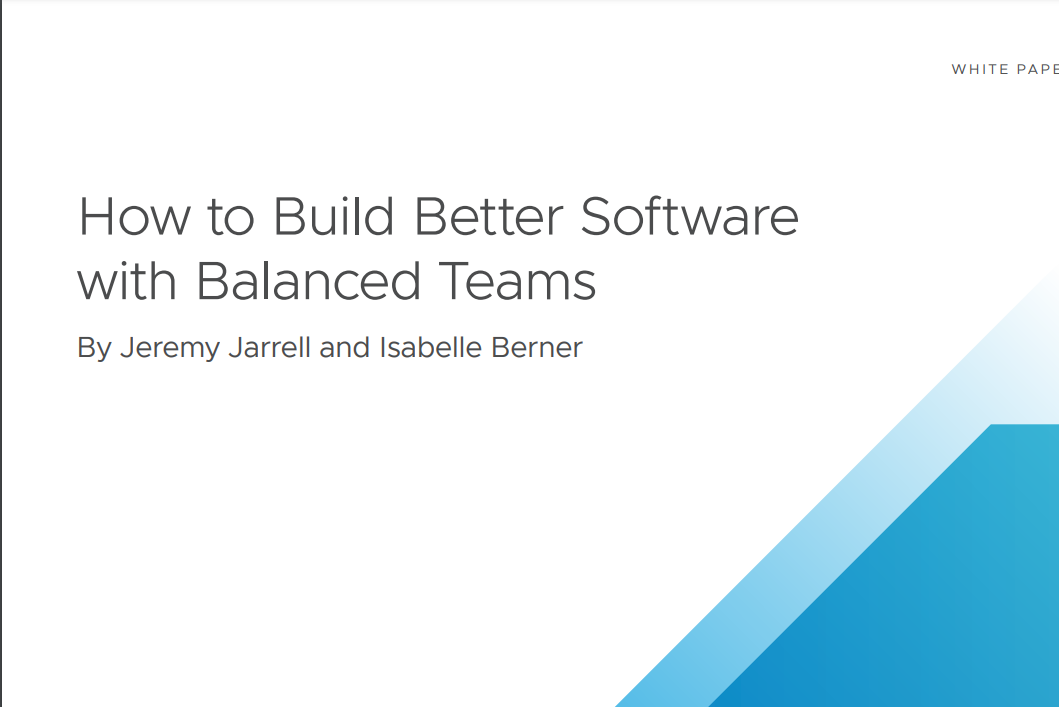Adding Balance To Your Team
The balanced team website describes the balanced team approach as, “a global movement of people who value multi-disciplinary collaboration and iterative delivery focused on customer value as a source for innovation.”
If you’ve worked with an agile approach before, then there are likely several themes in this description that might sound familiar, such as a focus on collaboration across your entire team, or placing a value on iterative delivery throughout the lifetime of the product.
But does that mean that the concept of a balanced team is intended to replace agile? Not at all. A balanced team approach can best be thought of as a practice complementary to today’s most popular agile approaches. Specifically, it’s an approach that places the product-focused team members, such as product managers and designers, on equal footing with the team’s technical-focused team members, affording them the same egalitarian benefits that earlier agile approaches afforded developers.
In fact, most organizations that have successfully implemented an agile approach have done so by implementing balanced teams alongside other agile and lean approaches, rather than instead of them.
This is because, rather than being a specific methodology with explicitly defined roles, events and artifacts that must be implemented for that methodology to be considered complete, the balanced team approach is a set of core values. If your team is already following an agile approach, then they may have taken their first steps toward many of these core values.
It’s this focus on values over practices that allows the balanced team methodology to complement any other agile approaches that might already be in place in your organization, rather than to compete with them.





